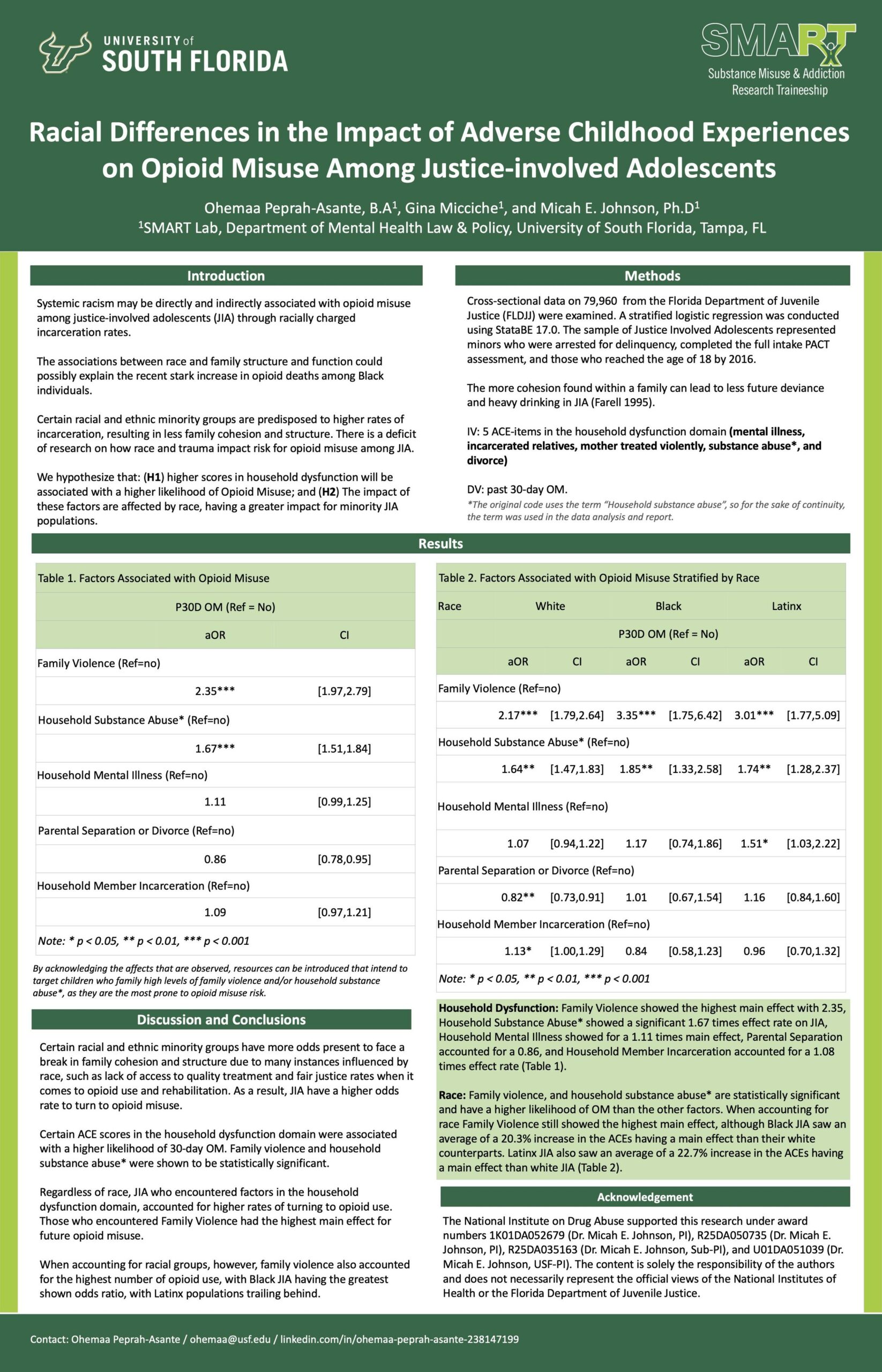

The National Institute on Drug Abuse supported this research under award numbers 1K01DA052679 (Dr. Micah E. Johnson, PI), R25DA050735 (Dr. Micah E. Johnson, PI), R25DA035163 (Dr. Micah E. Johnson, Sub-PI), and U01DA051039 (Dr. Micah E. Johnson, USF-PI). The content is solely the responsibility of the authors and does not necessarily represent the official views of the National Institutes of Health or the Florida Department of Juvenile Justice.
The data in this study were developed by and obtained from the Florida Department of Juvenile Justice (FLDJJ) in Tallahassee, Florida.

Aims: Systemic racism may be directly and indirectly associated with opioid misuse among justice-involved adolescents (JIA) through stress processes. The associations between race and trauma could possibly explain the recent stark increase in opioid deaths among Black individuals. Certain racial and ethnic minority groups are predisposed to potentially traumatic events and social stressors that exacerbate the effects of trauma. There is a deficit of research on how race and trauma impact risk for opioid misuse among JIA.
Methods: Stratified logistic regression was employed to analyze a statewide sample of 79,570 JIA from the Florida Department of Juvenile Justice (FLDJJ). This sample represented minors who were arrested for delinquency, completed the full intake assessment, and reached the age of 18 by the year 2016. Past 30-day OM was derived from self-reported data. Trauma was operationalized using the adverse childhood experiences instrument.
Results: More than 40% of the sample were Black adolescents, and over 90% of the sample experienced one or more forms of childhood trauma. The trauma items had cumulative and individual relationships with opioids, which varied across racial groups. Sexual abuse, family violence, and household substance misuse were associated with a 90% to 130% increased odds of opioid misuse. For one additional type of trauma experienced, the odds of opioid misuse increased by 27% among White JIA, 38% among Black JIA, 41% among Latinx JIA, and 36% among the total sample.
Conclusions: Initiatives that intend to resolve the opioid crisis may be improved by incorporating efforts to address trauma and the unique needs of certain racial and ethnic groups who are more susceptible to racial injustices.

Leave a Reply